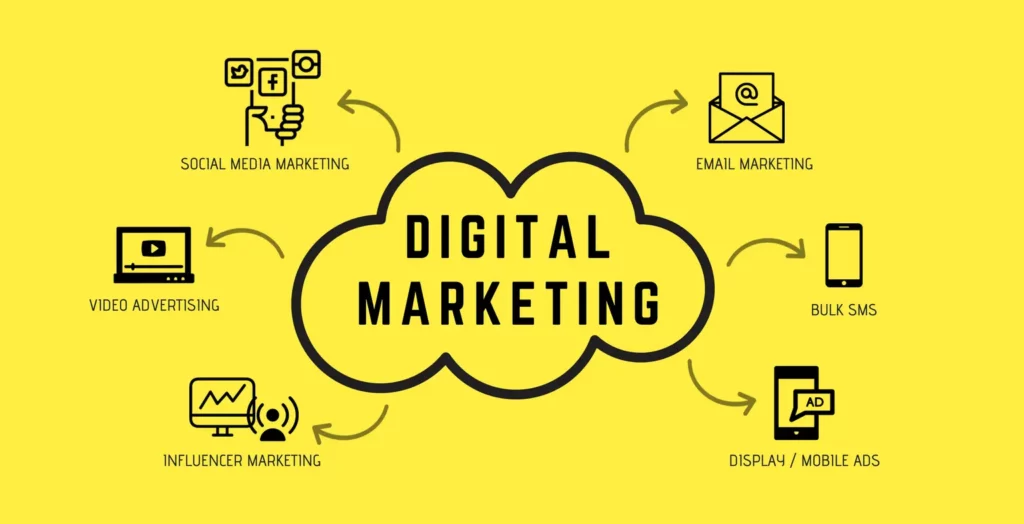There are several ways to grow your business online. Many people prefer to focus their strategy on social networks, with specific marketing campaigns. But the real impact occurs when all business channels (social networks and web pages) have a single digital marketing plan.
Digital marketing is the application of strategies that promote the marketing of a product, service, or even yourself, from digital media.
On this occasion, we will teach you the 4 key digital marketing techniques to boost your business from scratch:
Web design

It has been a long time since it is necessary to know programming to develop a website, there are platforms, such as Wix and WordPress, with the necessary html bases to start. In case you don’t know where to start, you will find templates with pre-established designs so that you can arrange them as you like. You can change the color of the elements, move them, relocate them and add others to get the design you are looking for.
If you already have a design in mind, all you need to do is start using the platform’s tools to start structuring the pages of your website.
As much as you are clear about the message to be transmitted and the way to do it, the audience is the one who has the last word. That is, if you have a clothing store, your website should be structured according to what the target customer would consume, otherwise, you can have a very nice and organized website without customers.
Digital Marketing Plan
A marketing plan consists of collecting all the objectives, planning strategies and actions to be developed in networks with the aim of promoting a product or service. There are several techniques that marketers use to promote digital content, as well as the 5W’s of journalism, there are the 7P’s of marketing, whose purpose is to add added value to differentiate.
The 7P’s focus on the target customer to build a long-term relationship:
Product: refers to the service offered. If we go back to the example of the clothing store, the product is textile and its success will depend on customer satisfaction. For example, if it is winter you should sell clothing that protects the consumer from rain and cold, if it is summer, the opposite. The key is to adapt the product to the customer’s needs. You can research trends, news and innovations that have been made in the sector to be updated.
Price: the value of the product depends on how much your customers are willing to pay and what is the profit margin they need to cover those expenses. As we mentioned at the beginning, the audience has the last word, even on prices. To attract customers and maintain a competitive advantage, you can opt for seasonal discounts or sales.
Promotion: all the advertising campaigns, sales and distribution methods enter so that the target customer knows the product. This section is where marketing professionals work most of the time.
Plaza: the plaza is the place where the product is displayed. Whether it is a physical location or a digital space, the distribution and presentation of the product is key for the client to decide to invest in it. To differentiate yourself from the competition, we recommend that you focus on the design of your commercial space and the use of visual merchandising techniques.
People: refers to the business workforce. Employees are just as important as the audience, without happy workers things do not progress. As the manager of the business (and its employee), it is your responsibility to train the staff to provide the best service and offer a harmonious and organized work space.
Processes: the delivery of products and customer service is what will determine the relationship with the consumer. If the customer had a good experience with the brand, they will come back. Maintaining a good process ensures efficiency and quality.
Presentation: surely you have heard the saying “everything enters through the eyes”. This is true in sales, the evidence that a product is good is the presentation that customers ultimately interact with, which involves the physical business environment, employee behavior, and salient features of your business.
Measurement tools

Measurement tools help collect the information that users generate when visiting a website and see the interaction they have with it. All this data is used to improve the content offered online and adapt to what the customer wants. Web analytics helps to improve the marketing plan, optimize the web to increase conversations and identify the target audience.
The 5 star measurement tools are:
- Google Analytics: The most popular tool, it is free and easy to use. Being from Google, it offers a broad vision of web metrics.
- Google Console – Goes hand in hand with Google Analytics. It is very useful for monitoring the presence of the website in the organic search results.
- Metricool: a network and advertising management tool. It allows you to analyze, schedule and control the productivity of your online content.
- True social metrics: oriented to social networks. Here you can calculate the return on investment in networks, see the interactions and the economic value per publication, the conversion rate and the most popular content.
- Moz is a set of measurement tools for analyzing results online. You can compare the performance of your competition with yours, do content audits and position the page organically in the search engine. In addition, it serves as a Google Chrome plugin. It is free and, if you want, paid.
Social networks
Today, a business that is not on social networks is an invisible business. The platforms give visibility and increase brand awareness, in addition, they generate a community of customers loyal to the project, which later serve as a magnet to attract more users.
The performance of digital campaigns is measured with metrics – data expressed numerically on the impact that a particular publication has had – the sum of these data is what allows us to compare the productivity of the publications and define whether a campaign was successful or not.

